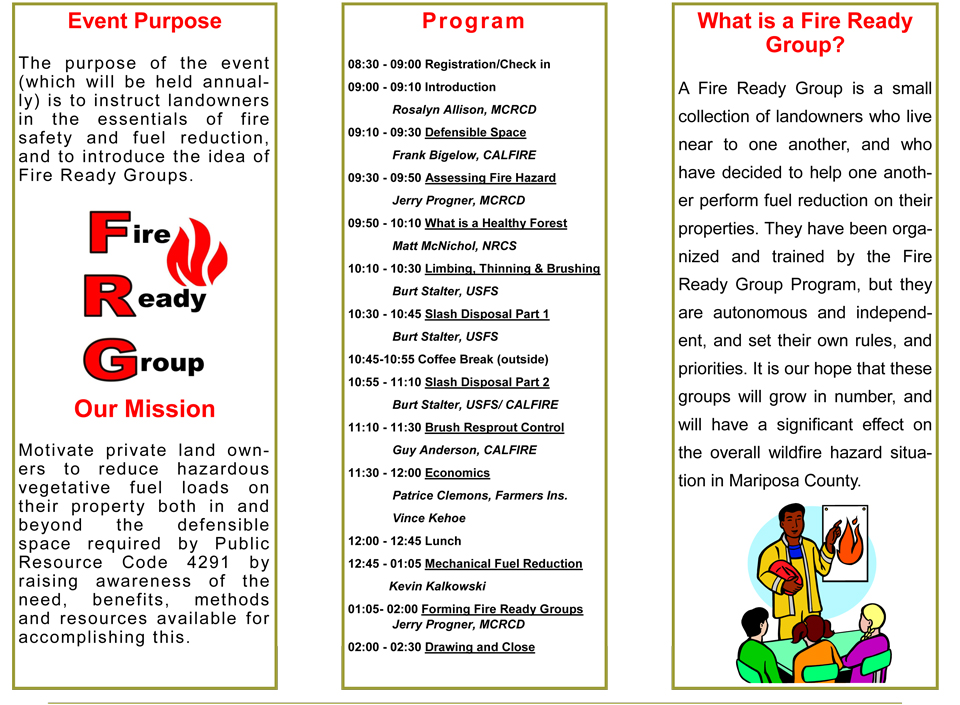September 9, 2014 - Early on, the danger level from catastrophic wildfire was low. The credit for this lies with the Native Americans, whose culture, land stewardship ethic, and sense of survival caused them to practice a variety of sophisticated land management measures. The most important of these involved the use of fire. As a result the land was more open, with large areas entirely free of brush. Native Americans used fire as a tool for burning grass and brush to accomplish many things. Benefits of burning included reducing danger from large wildfires, increasing the survival of large trees if a fire did occur, producing new vegetation for wildlife to eat, assisting in the cultivation of plants for food, driving game into the hands of hunters, and cleaning out acorn worm infestations under oak trees.
The early 1850's saw an immigration of gold-seekers into the Sierra Foothills which continued for over four decades. Open landscapes were also the result of this immigration, which brought with it deforestation from timber and mining operations. Lumber and gold ore mills were driven by steam engines, whose boilers could consume cords of wood in a day. In addition, many stands of virgin pine and cedar were harvested for lumber, and the lumbermen did not practice modern forest management, leaving large areas devoid of trees and covered with slash. The slash in turn contributed to large wildfires, opening up the landscape even more.
In the early 1900’s, owners of small ranches and homesteads performed controlled burning around their properties on a regular basis. Sometimes, people would set a fire without forethought simply because they thought the area they were passing through needed burning. Lightning fires and human-caused ignitions were usually allowed to burn unchecked unless they threatened improved property.
This changed when the Great Idaho Fire occurred in 1910 in what is now the Lochsa River Watershed. There had been several serious wildfires in the country in the previous two decades, but the Idaho fire was serious enough in size and loss of human life to cause the then Chief of the Forest Service to implement the “total Suppression” policy, which meant that any fire, natural or otherwise was to be extinguished immediately. Controlled burning was actively discouraged or prohibited. Federal law tied state appropriations to the state’s adherence to the total suppression policy. Thus, the California Division of Forestry and Fire protection (CDF now CAL FIRE) was forced to fall in line. The public was bombarded nation-wide with the Smokey Bear campaign which carried the implicit message that all fire is evil.
This situation continued until the 1950’s, when some federal and state agencies began to support the limited use of fire to manage federal land. But by then, the public had lost the thread of understanding about the use of fire for private land management, and became neutral at best and negative at worst toward controlled burning. Some burning did occur, but sporadically. Meanwhile, the amount of brush and other low-growing flammables grew dangerously. It finally reached the point in the 1970's where using fire as a means of removing brush and grass in the forest became totally unsafe. It was then necessary to resort to more costly methods, like hand crews and power equipment. The high level of expense further inhibited land maintenance by private owners. Our current situation is one in which both public and private forestlands have an abnormally heavy fuel load. This has caused extreme fire hazard and in turn, catastrophic wildfires.
The next article will describe the Mariposa Range Improvement Association, and how a group of volunteers managed in 1953 to burn over 70,000 acres in the county overgrown with brush and dead material. This effort, fully supported by the State of California, was a significant break-out from prior practice.
Below is a flyer for the First Annual Fire Ready Workshop to be held in Midpines on October 11, 2014.












